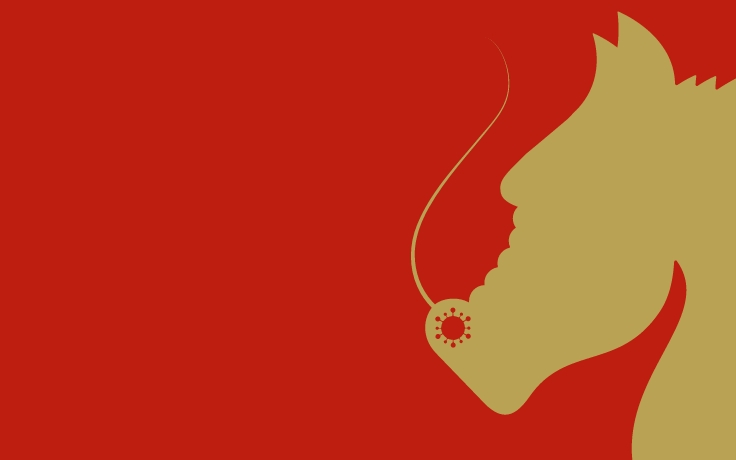“GO BACK WHERE YOU CAME FROM, you fucking Chinese!” the White woman yelled, before crossing the street and punching a Chinese man in the face three times. A Vietnamese woman discovered her vehicle severely vandalized, along with “Fuck Chinese C19” scratched into the hood. A Chinese man sitting in his car saw two Latino men pointing at him and saying he was “a dirty Asian and has coronavirus.” When the Chinese man began recording the pair on his cellphone, they got into a tussle, and one Latino yelled and pushed the Chinese victim before fleeing.
These encounters, documented by the Los Angeles County Commission on Human Relations for its latest Hate Crime Report, offer snapshots of nearly four dozen anti-Asian hate crimes reported in 2020 to more than 40 law enforcement agencies across the county. Recorded anti-Asian hate crimes rose 76% in 2020, and nearly a quarter of them explicitly blamed the victims for COVID-19.
The commission’s statistics come on the heels of a state Department of Justice report on hate crime, which found a triple-digit percentage rise in crimes against Asian Americans, from 89 in 2020 to 247 in 2021 — a 177.5% increase. Overall, California recorded a 32.6% rise in hate crimes.
Crimes against Asian Americans have never received as much attention as those targeting Blacks and Latino/as, in large part because the total number of crimes against Asian Americans is smaller. But viral videos and media attention on violence toward Asian Americans because of COVID-19’s origin in China shifted the spotlight to a long-simmering problem.
“The epidemic of hate we saw spurred on during the pandemic remains a clear and present threat,” California Atty. Gen. Rob Bonta said at a July news conference announcing the Justice Department report and the creation of a position for a statewide hate crime coordinator. “We saw the bigoted words of our former president turn a trickle of hate into a flood that remains with us.”
When he was president, Donald Trump repeatedly called COVID-19 “the Chinese virus.” His words created fear — not just one alarm but two: fear of the Chinese, and fear of Asian Americans generally. That fear subjected Asian Americans to violence and distracted policymakers in the early stages of COVID-19’s spread: At a time when a shortage of testing and masks fueled a public health crisis, supporters of President Trump were instead focused on blaming China and insisting that it was complicit in the outbreak and spread of the virus.
In response to a dramatic increase in violence against Asian Americans nationwide, Congress passed the Covid-19 Hate Crimes Act, which President Joe Biden signed into law in May 2021. It called for reporting in multiple languages, designated a national point person to review hate crimes related to COVID-19 and authorized grants to state and local governments to respond to and prevent hate crimes.
FEAR RELATED TO DISEASE ISN’T new, said Karen Umemoto, director of the Asian American Studies Center at UCLA. “The association between Asian immigrants and disease is a long-repeated pattern,” Umemoto said in an interview. “You can see in the lead-up to the Chinese Exclusion Act of 1882 that the imagery of Chinese as disease-ridden, rat-infested ‘mongrels’ was prevalent in popular media.”
What is unique now, and what sparked recent anti-Asian violence, she said, was the use of the virus as a political trope. “Trump tapped fear and an existing sense of White supremacy — covert, overt, conscious, unconscious — that people who do not fit the norm of the Anglo-Protestant are not good for the country.”
Umemoto, a professor of Asian American studies and a member of the urban planning faculty at UCLA’s Luskin School of Public Affairs, added: “There is empirical evidence for this.”
While the hateful language may be aimed at Chinese, she said, “We know any time one Asian group is called out, people can’t distinguish between who is Chinese, Japanese, Filipino, Thai, etc.; so many people come under fire by those who think the Chinese are responsible for the spread of the virus.”
A study published in the American Journal of Public Health, co-authored by UCLA Community Health Sciences Professor Gilbert Gee, examined the relationship between the #ChineseVirus and #Covid19 hashtags and negative or anti-Asian sentiment. The study also examined whether Trump’s use of #ChineseVirus made a difference in online discourse.
In an analysis of more than 1.2 million tweets during the weeks before and after Trump’s tweet on March 16, 2020, containing the phrase “Chinese virus,” the study’s six authors found that more than half of 777,852 tweets containing #chinesevirus showed anti-Asian bias, while about 20% of nearly 500,000 tweets containing #covid19 showed anti- Asian sentiment.
“The recent uptick in anti-Asian hatred is a reminder of the dominant narrative when it comes to how people perceive Asian Americans: perpetual foreigners,” said Marshall Wong, who coordinates the county Human Relations Commission’s anti-hate crime programs. “It doesn’t matter how many generations your family has been here, you’re largely perceived as someone who falls somewhere between lucky to be here and an unwanted foreign presence.”
This stereotype of the perpetual foreigner, combined with a stereotype of Asians as the “model minority,” creates a toxic mix, Umemoto said. “You have people feeling that Asians are responsible for the pandemic but they don’t suffer in the same way because they’re in positions of privilege.”
THE NATIONWIDE RISE IN CRIMES against Asian Americans arrived amid a confluence of conditions that created what Umemoto refers to as “the perfect firestorm of hate.” The fire, fueled by a virus that originated in China — a country seen as a rising global economic power — was further stoked by political rhetoric from Trump and others, who spewed racial animosity toward all Asians, not just people of Chinese ancestry. That fire gained oxygen from social media, which further spread the hate.
Early in the pandemic, Asian American business owners and employees were on the front lines of violence and hate amid false beliefs that Chinese American businesses and Chinatowns were sources of the spread of the disease. Paul Ong, research professor and director of UCLA’s Center for Neighborhood Knowledge, co-authored a study with the Asian Business Association on the impact of the pandemic upon Asian American businesses. It found a majority of Asian American businesspeople believed they were unjustly made scapegoats for COVID-19.
“We were surprised by the high proportion that reported some incident in terms of racial confrontation at the work site,” Ong said. “One of the big findings is that it leaves a pervasive fear among the owners and their workers.”
In addition to the pandemic, growing trade tensions between the United States and China or other Asian countries heightened the view that Asian Americans are “the enemy,” Ong said. “Our findings were consistent with the fact that during these tense moments of a public health crisis, Asian Americans became a convenient target for the blame.”
Throughout history, Asian Americans have been victimized by the United States with racist policies and “yellow peril” laws. In 1875, the Page Act effectively prevented Chinese women from immigrating to this country. The 1882 Chinese Exclusion Act halted immigration by Chinese laborers. During World War II, President Franklin Roosevelt’s Executive Order 9066 resulted in the incarceration of about 110,000 Japanese Americans at prison camps in California and six other states. Interracial marriage between Whites and Asians was illegal in many states. In California, Ong said, school segregation policies impacted Asian Americans along with other minority groups.
“The roots of simple things like zoning actually came out of efforts here to restrict Chinese from moving into certain neighborhoods,” he said. “And historically, freeways have destroyed Asian neighborhoods in Sacramento, in Stockton, and here in Los Angeles. Freeways have damaged minority neighborhoods, but Asian Americans, in large part, have not been part of that discussion.”
HATE CRIMES DIFFER FROM HATE INCIDENTS.
In California, a hate crime is a crime against a person, group or property that is motivated by the victim’s real or perceived protected social group, such as disability, gender, nationality, race or ethnicity or sexual orientation. A hate incident is an action or behavior motivated by hate that does not rise to the level of a crime — for example, name calling, insults or distributing materials with hate messages in public places. Hate speech is protected by the U.S. Constitution, provided it does not interfere with the civil rights of others.
Bonta and others note that reported hate crimes may represent only a fraction of actual hate crimes committed. Individuals may be reluctant to report crimes for a number of reasons, including fear of retaliation, language barriers, past negative experiences with law enforcement, cultural stigmas, or a lack of understanding of the criminal justice system. In addition, law enforcement agencies might underreport crime.
“Every year, the U.S. Department of Justice asks every police department to report hate crime data and, on average, 85% of them either fail to respond to the request or they report zero hate crimes,” Wong said. “Either they feel that they don’t have the capacity to do so; they don’t think it’s a serious problem; they don’t have proper training to be able to detect and investigate hate crimes; or, possibly, they don’t want the negative publicity.”
Umemoto is working with the county Human Relations Commission to create a data dashboard containing 17 years of crime data. The interactive mapping database breaks down crimes by location, race and type of racially motivated crime, such as assault or vandalism, and it will allow users to see multiyear trends. Wong said the county also is launching a site to allow the public to view data and learn about the history of crime in their specific city or neighborhood.
Such tools will help the public become more informed, as well as dispel long-held false notions about crimes. For example, “There’s a misperception among Asians that it’s mostly Black people who are attacking them, and that’s not true,” Umemoto said. “The perpetrators are pretty proportional to the population.”
State and local governments document hate crimes but not hate incidents. Russell Jeung, a professor of Asian American studies at San Francisco State University, wants that to change.
Jeung is a co-founder of the nonprofit organization Stop AAPI Hate, which tracks incidents of hate and discrimination against Asian Americans and Pacific Islanders nationwide. The website allows victims to self-report incidents, such as verbal harassment, physical assault, being coughed or spat upon, online misconduct or avoidance/shunning. Respondents can input information in any of 16 languages.
Stop AAPI Hate launched in March 2020, coinciding with the Centers for Disease Control’s declaration of COVID-19 as a pandemic. During the past two years, Stop AAPI Hate has received reports of 11,500 hate and discrimination incidents nationwide. One in five of the victims said they had three or more long-term symptoms of continuing trauma, Jeung said, such as anxiety, depression, anger, hyper-vigilance and avoidance.
“We had a sense that racism would occur because of past historical experiences with diseases coming from Asia,” Jeung said of the launch, which had been in the works before the pandemic. “We launched Stop AAPI Hate because we knew we needed to document the racism we already saw occurring in order for the government to take any action.”
Jeung and his colleagues have worked with California lawmakers to create a “No Place for Hate Agenda” — three bills dealing with anti-Asian hate that focus on public health rather than criminal laws.
• Assemblyman Phil Ting’s (D-San Francisco) AB 2448 expands civil rights protections for individuals who face discrimination at businesses.
• Sen. Dave Min’s (D-Irvine) SB 1161 requires the state’s 10 largest transit agencies to gather data and design solutions to address street harassment and harassment on public transit. The bill passed the Senate in May and is under consideration in the Assembly.
• Assemblywoman Mia Bonta (D-Oakland), Al Muratsuchi (D-Torrance) and Akilah Weber’s (D-San Diego) AB 2549 would declare street harassment to be a public health issue.
“The bills take a public health approach that doesn’t penalize perpetrators,” Jeung said. “We can’t arrest every person who catcalls a woman because … [of] free speech, but we can educate them; we can name the problem. By defining harassment and acknowledging the harm it perpetuates, we can fix it.”
IN 2020, L.A. COUNTY LAUNCHED LA vs Hate, an initiative dedicated to helping communities unite to report, track and resist hate. Led by the Human Relations Commission, the program partners with local groups to provide free outreach services, educational material and other resources to victims of hate and discrimination.
Rick Eng, a coordinator for the rapid response provider network at LA vs Hate, has noticed an increase in students responding to AAPI hate.
“When I talk to these groups, I talk about Chinese exclusion; I talk about Japanese American incarceration; I talk about the alien land laws in this country,” Eng said. “Kids are very well attuned to wanting to learn about this history — this history of discrimination and injustices in general — and generally wanting to do something.”
Umemoto is leading an effort to create the first Asian American and Pacific Islander open-access multimedia textbook that schools could adopt as part of their curricula. Top experts, she said, are working to translate 50 years of scholarship into accessible prose for high school and college students.
Last year, California became the first state to require all high school students to complete one semester of ethnic studies in order to graduate. UC and Cal State students, as well as California’s community college students, also have an ethnic studies graduation requirement. These schools are not asked to include any particular ethnic groups, but Umemoto hopes resources from the textbook will help teachers feel comfortable incorporating AAPI materials into their courses.
“For Asian Americans, learning about our history, learning about the history of anti-Asian hate, why it’s risen over time and how people have fought against it, is something very empowering,” she said. “For those who are not Asian Americans and who know little about Asian Americans and Pacific Islanders, learning the history creates historical empathy through which people can come to have an appreciation of our diversity and the richness of Asian and Pacific Islander communities.”

























